Vietnam
Since you’re here, you’re planning for a trip to Vietnam, or at least interested in our country, aren’t you? Vietnam must be strange to you because of its big renovation over such a short time. No more sorrow and sadness of the Vietnam War, Vietnam now is so on the move with an easier assessment, modern cities with improved facilities, foreign languages are becoming more and more popular, Vietnam is truly a must-visit destination for everyone, from an adventurer to a chill-aholic.
After the Vietnam War ends in 1975, the country had to go through hunger and was destroyed by bombs and guns. Then in 1968, Vietnam began its renovation called Doi Moi, started its international integration process.
Nowadays, Vietnam is a developing country, which attracts lots of tourists by its both exciting modern cities...
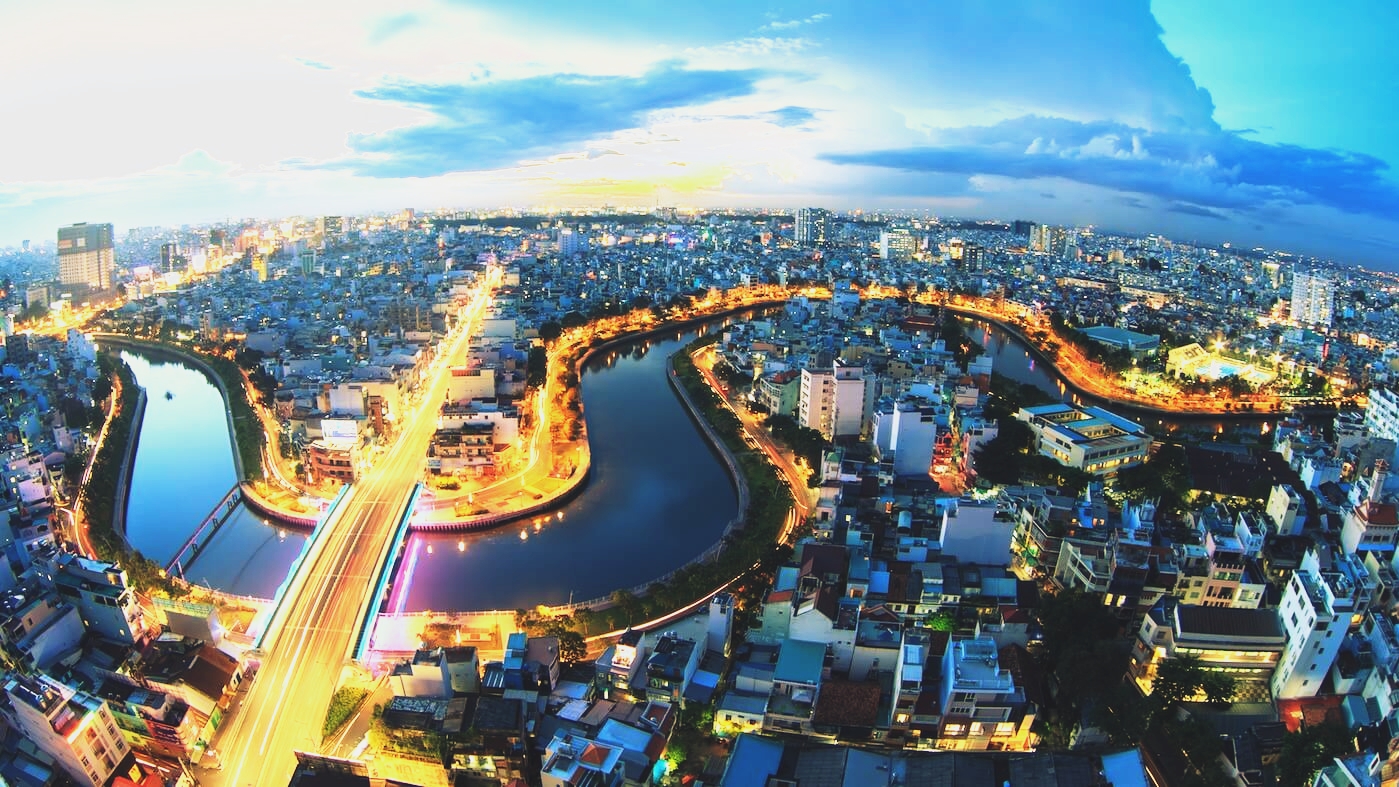
...like Ho Chi Minh City...
...or Hanoi City...
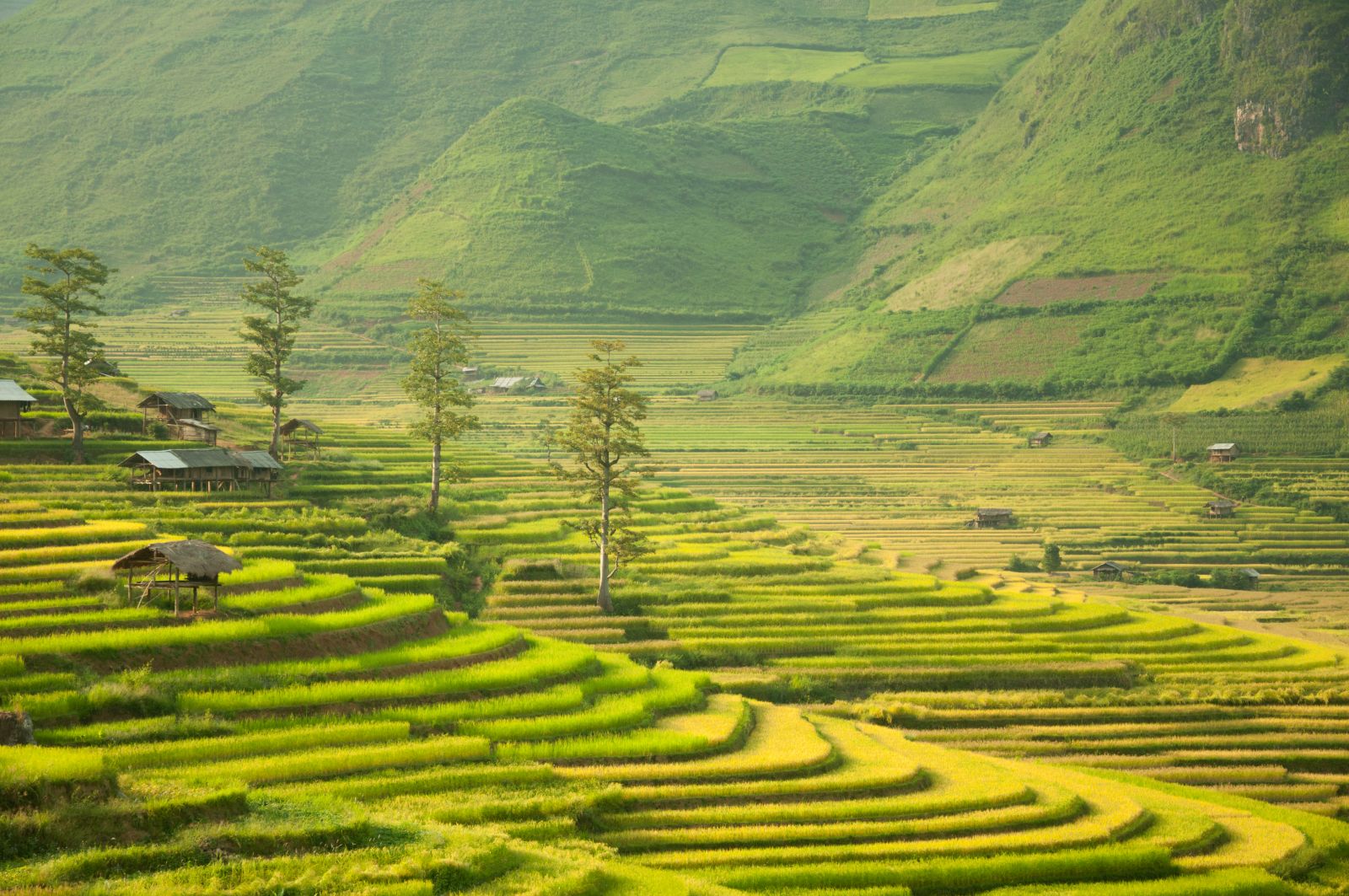
...and its impressing natural landscapes...
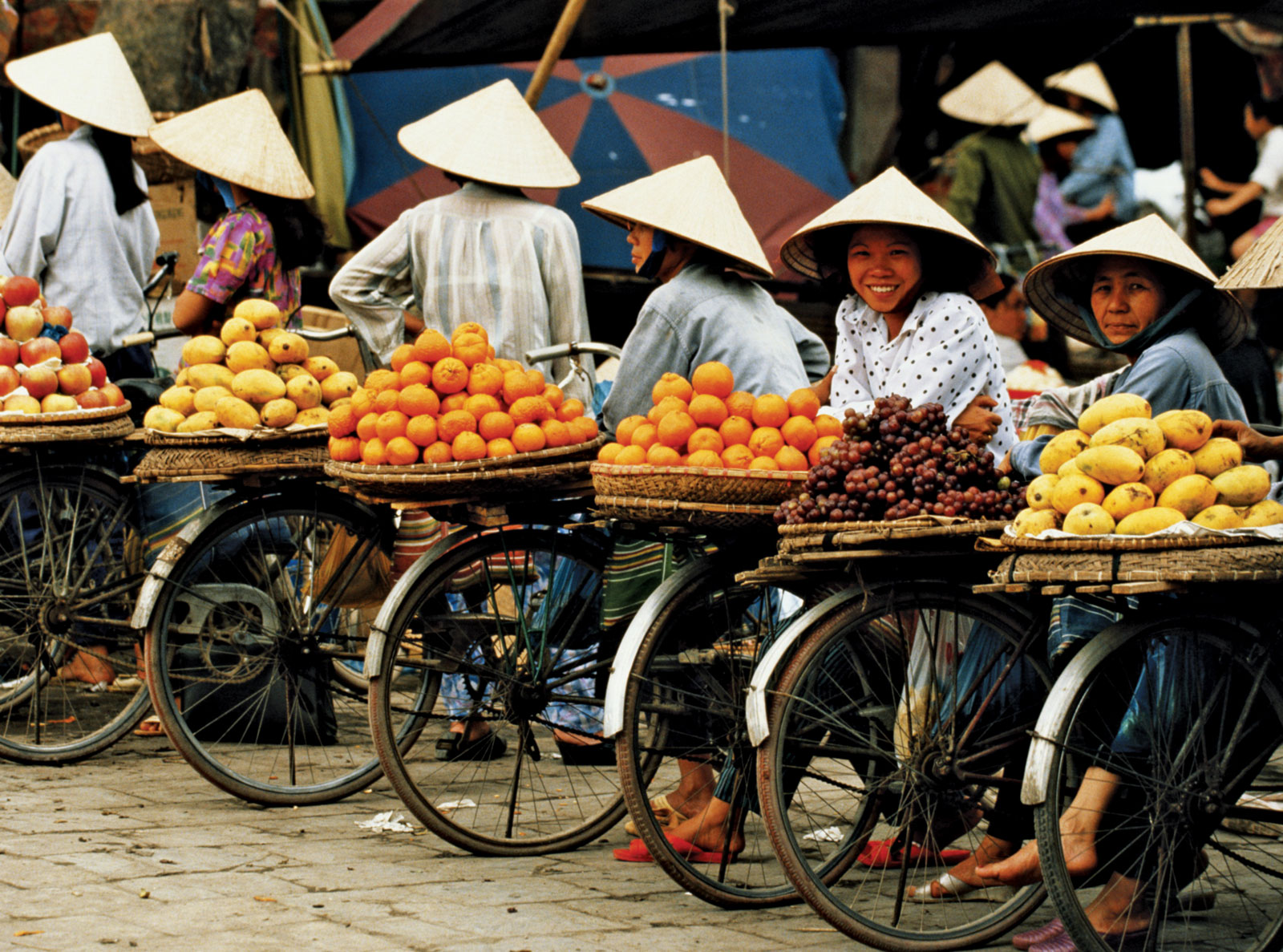
...with interesting culture.
Vietnam is a country of tropical lowlands, hills, and densely forested highlands. As we can say about its terrain is diverse, from the North to the South, from the West to the East.
Where to go in Vietnam
Tourists can find a lot of flights to and from Vietnam, to three major cities Hanoi – the Northern, Ho Chi Minh – the southern and Da Nang – the Central. It takes you at least a month to discover all the corners of Vietnam, and at least 2 weeks to “take a look” at the popular destinations.
Now, begin the journey in Ha Noi – the capital city of Vietnam for over a thousand years, tourist are surprised by its change over such a short time. Hanoi is called the “Paris of the East” for its French architecture influences. With the ancient Pagodas and Temples, the Old Quarter and dozens of lakes, Hanoi attracts tourists by its both modern and ancient beauty.
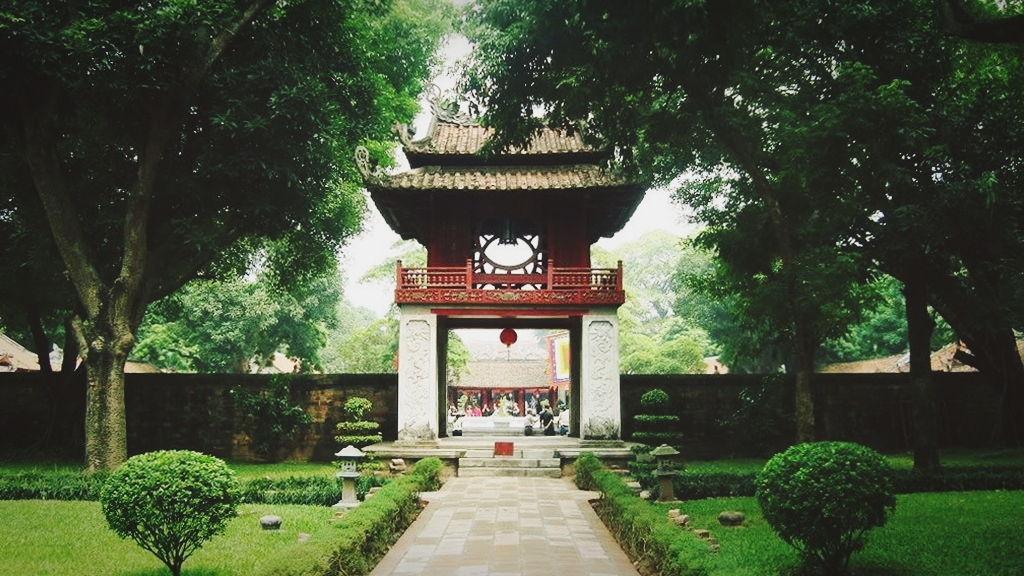
Khue Van Pavilion in Quoc Tu Giam Temple Of Literature - A Temple of Confucious in Hanoi
After Hanoi, tourists often go East for Ha Long Bay, a UNESCO World Heritage Site, to admire the spectacular landscapes, and find themselves fall in love with the nature.
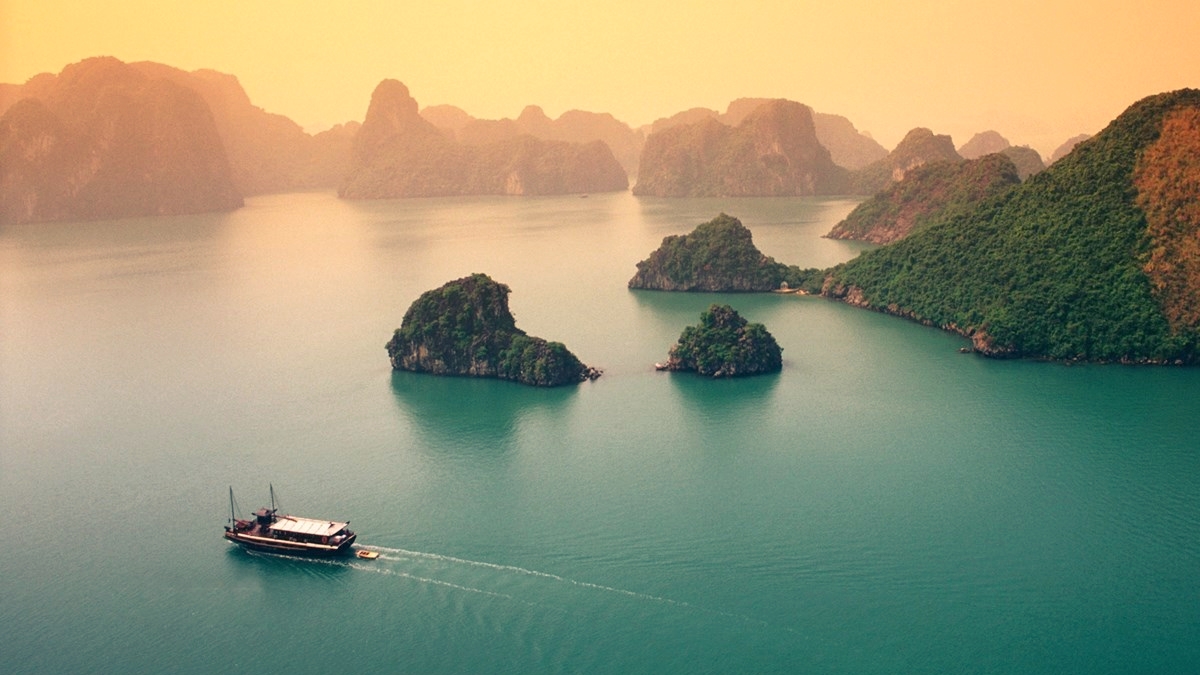
Ha Long Bay is just amazing
However, tourist can also go to the Northwest and the Far North as well, where the ethnic minorities reside. This area of Vietnam is next to Laos and China Border, mostly covered of mountains and hills, is where the scenery is simply stunning. Tourist can also conquer the hiking challenge to the top of Hoang Lien Son mountain range: Fan Si Pan during their stay in Sa Pa – the former French hill station, and now famous for its hill tribes, such as the Hmong, Tay and Dao.
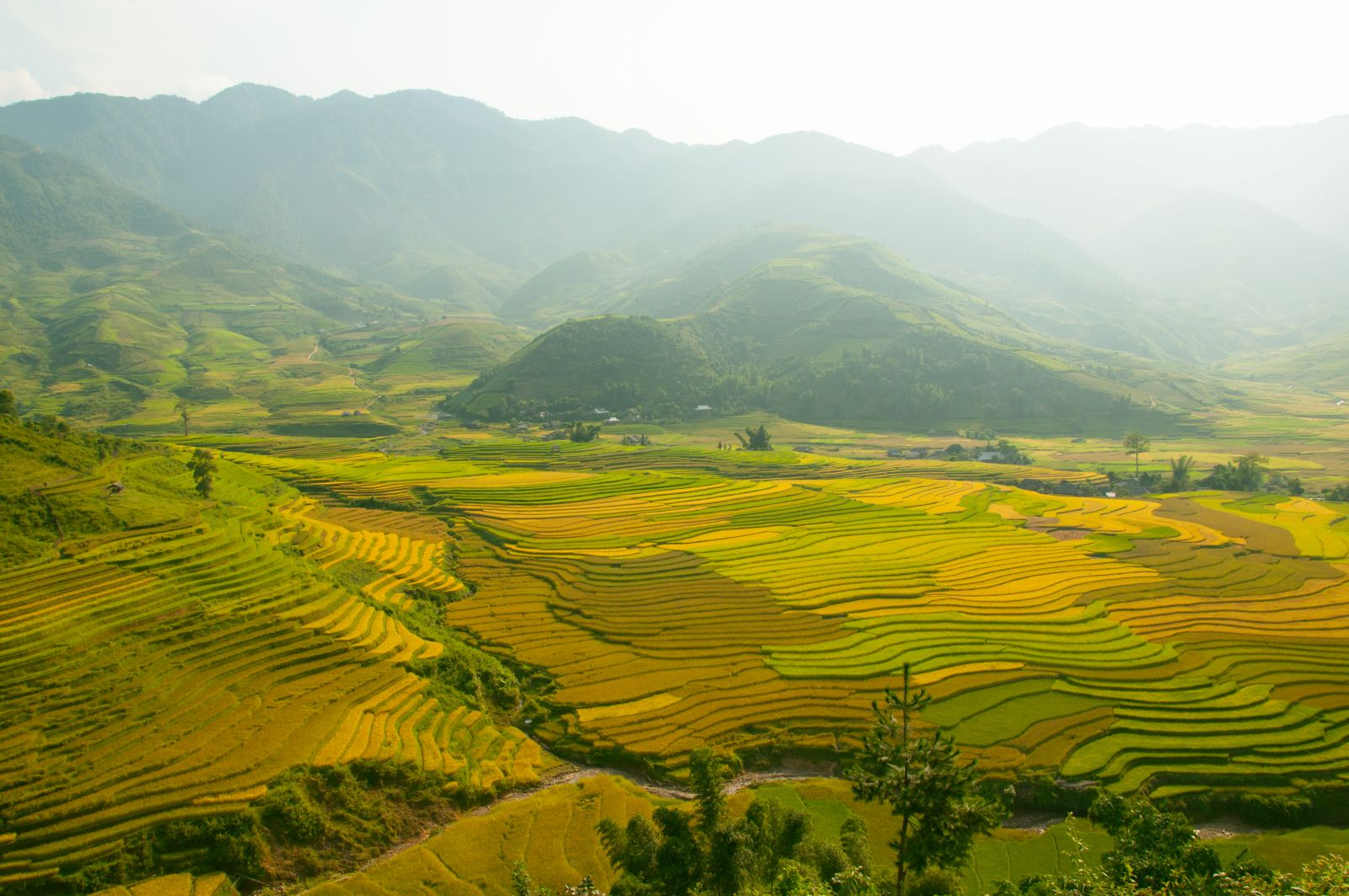
The stunning view of terraced fields in Mu Cang Chai
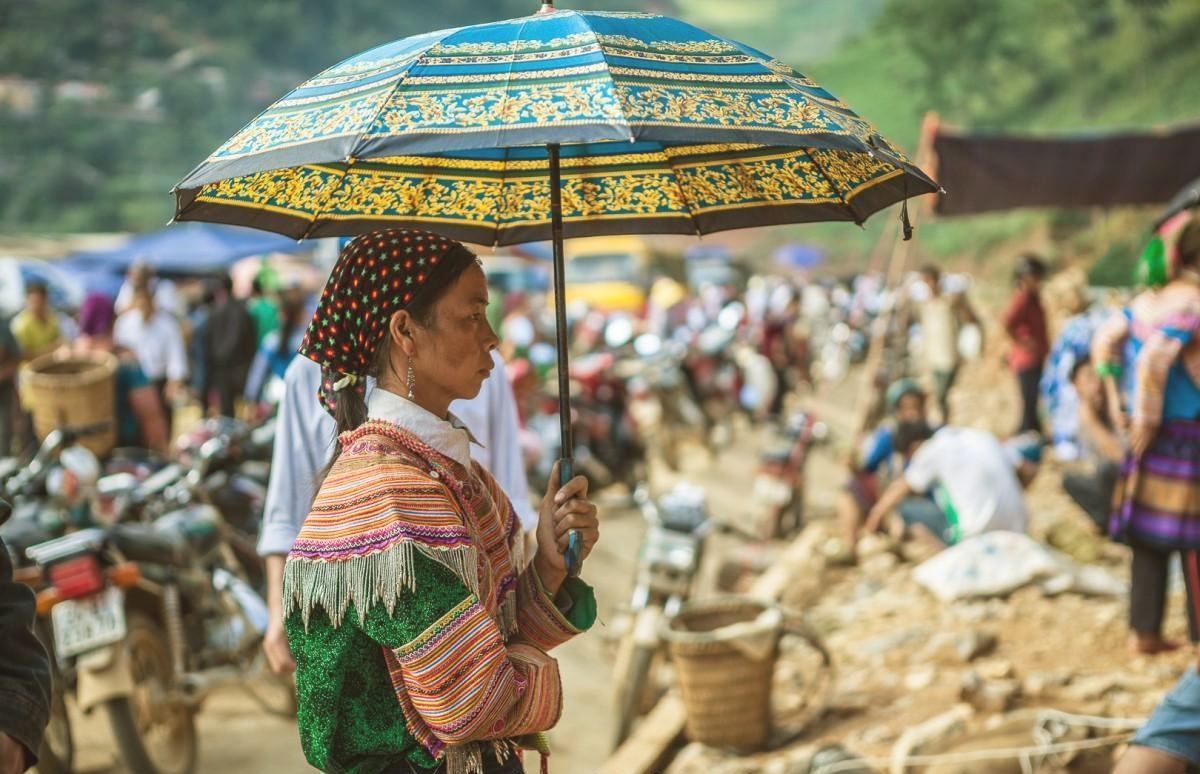
A typical H'mong lady at Can Cau Market - Sapa
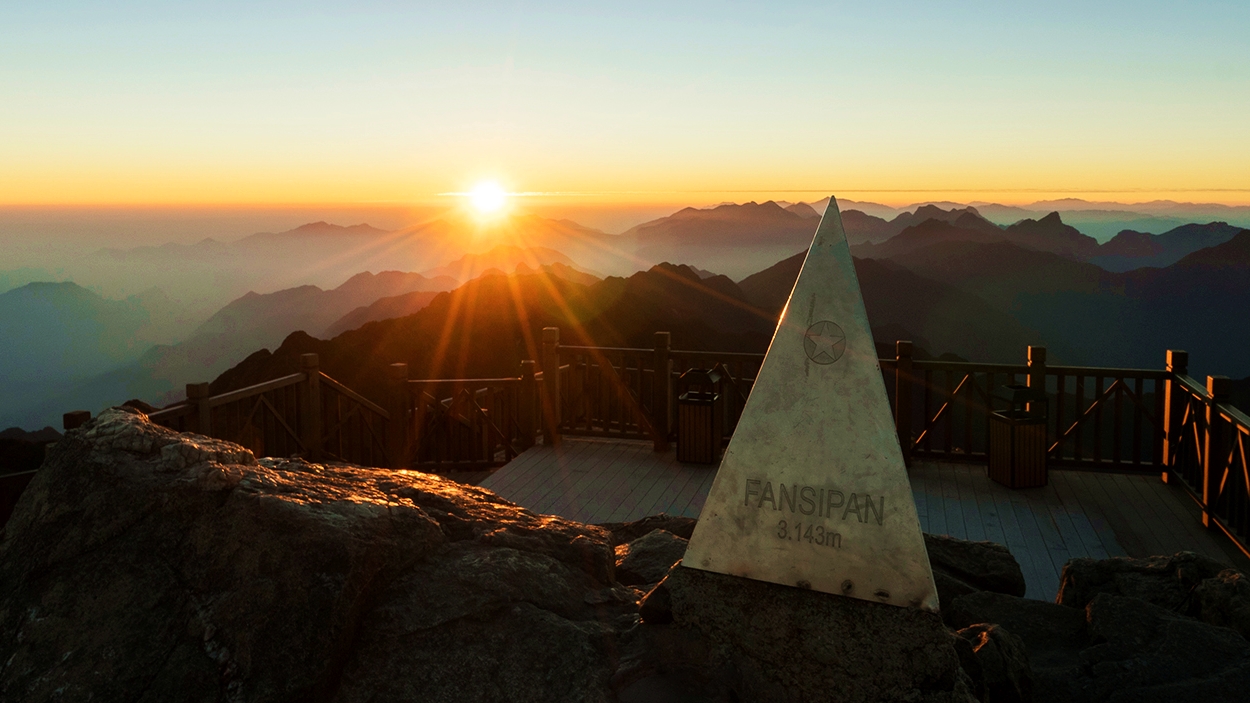
Conquer Fansipan - the roof of Indochina after 12km of hiking
From Hanoi, tourists can also go South, to Ninh Binh. Here lies the Trang An Scenic Landscape Complex, a UNESCO World Heritage Site. This Complex includes Hoa Lu – the ancient capital of Dai Co Viet (before 1010), Tam Coc – Bich Dong and Bai Dinh Pagoda (the largest Buddhist complex in Vietnam). There’s no word can describe the beauty of this World Heritage Site, and it usually takes one day to visit these place by car or motorbike.
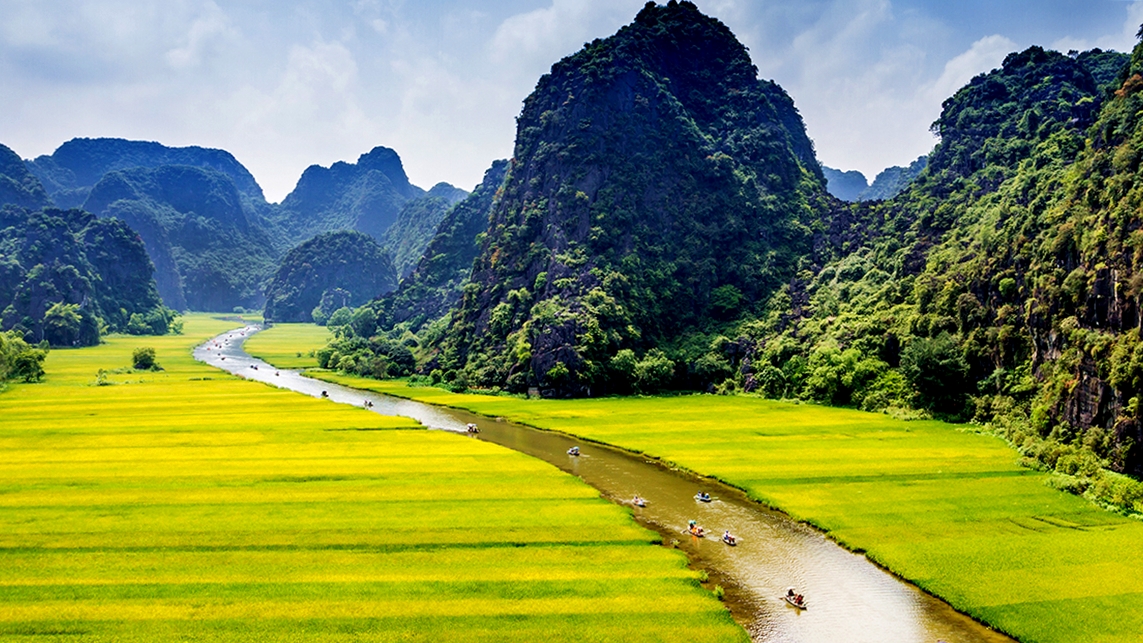
On the boat ride to visit Tam Coc
Continue the journey to the South, tourists will find themselves lost in another UNESCO World Heritage Site: Phong Nha – Ke Bang National Park. Phong Nha – Ke Bang is known for its 300 caves and grottos systems. The largest cave in this national park – Son Doong cave – which discovered in 2009, is considered as the largest cave in the world. And two of the most popular caves in this Nature Heritage Site are Phong Nha Cave and Thien Duong Cave.
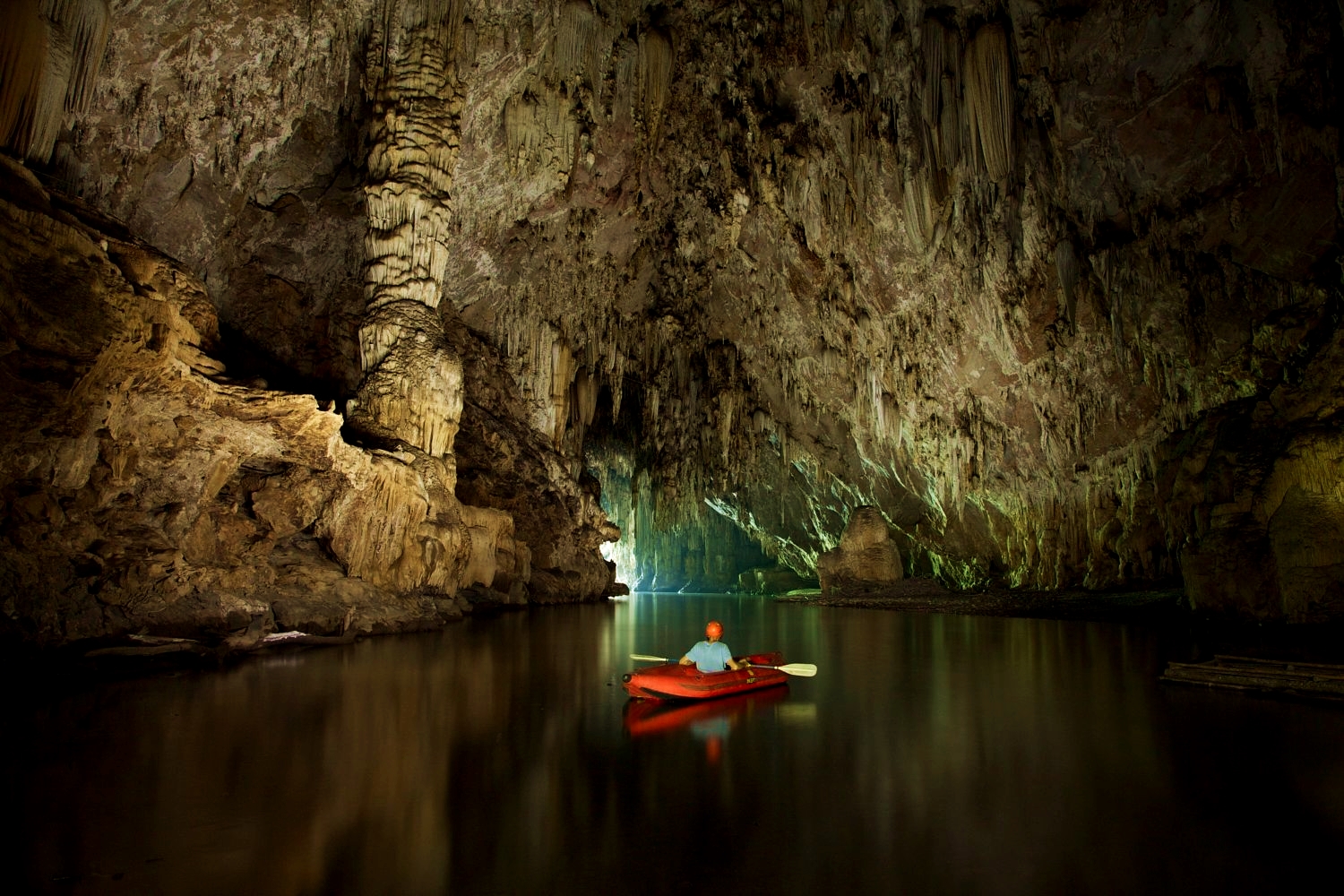
Phong Nha Cave is a popular site which can be visited easily by boat...
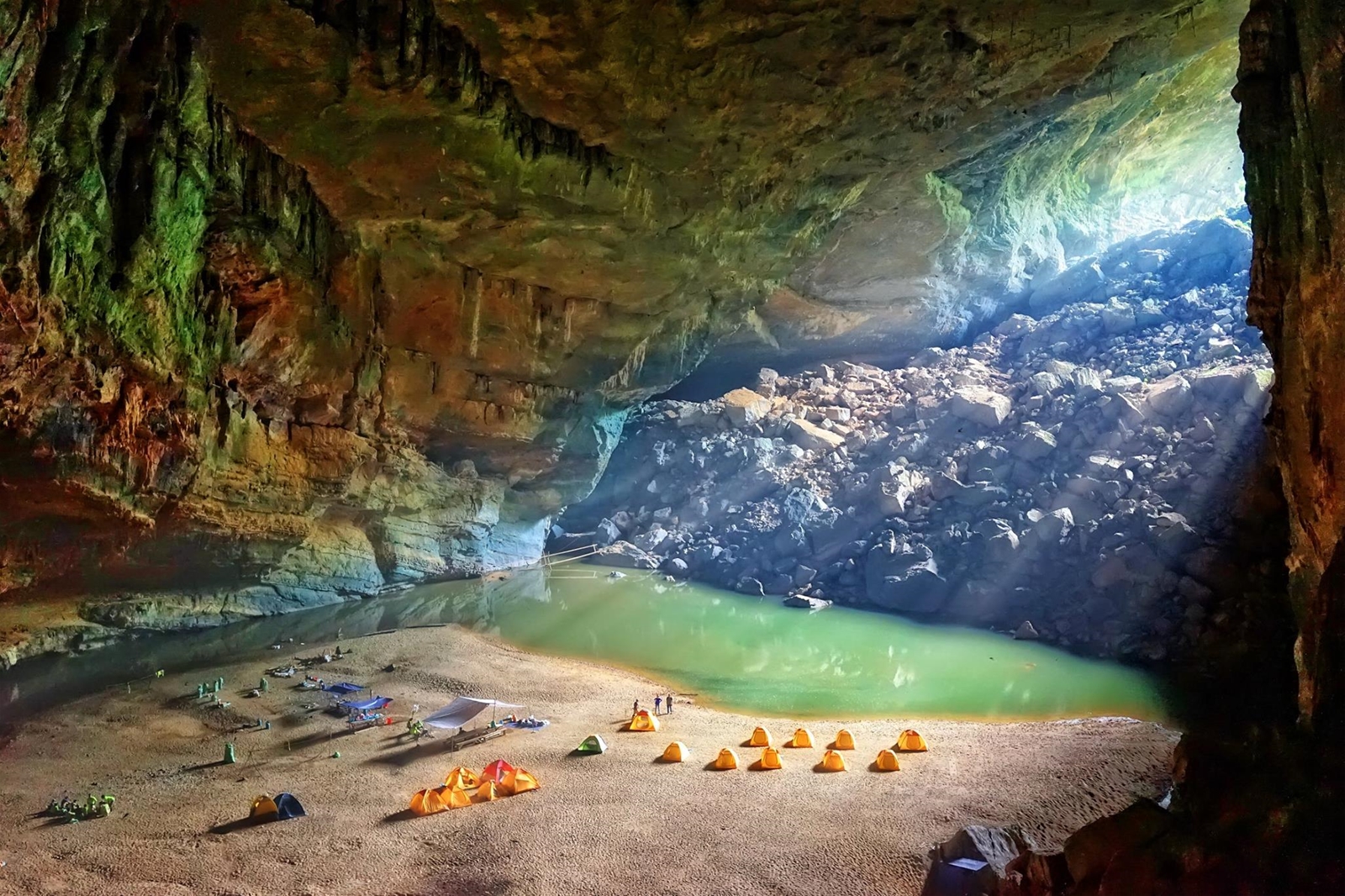
... while you cannot visit Son Doong Cave yourself and need to book a tour two months in advanced.
Heading South to Quang Tri Province, tourists will take a step back in time while visiting the DMZ (Demilitarized Zone), which divided Vietnam into two parts during the Vietnam War (1954 – 1975) with Ben Hai River was the border.
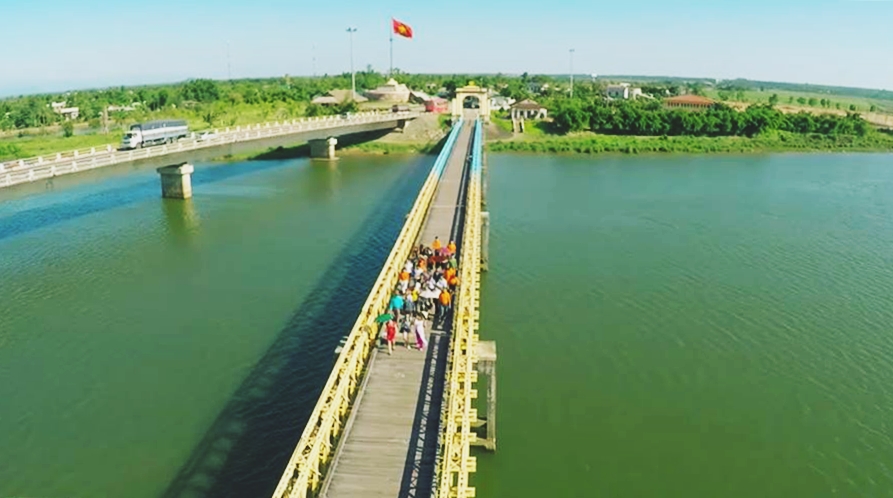
Hien Luong Bridge over Ben Hai River - the official dividing line between Vietnam’s north and south
One hundred kilometers south of Quang Tri, tourists arrive in Hue, where the Nguyen Emperors established their capital in the 19th Century. Hue’s proud to give its tourists a great opportunity to discover the history and culinary culture. Although the Nguyen dynasty no longer exists, Hue still has something royal. Unlike anywhere else in Vietnam, female students still wear the traditional Ao Dai.
Discover more about Hue in our Hue Travel Guide.
Hue is famous with its amazing Imperial City...
...and the beautiful Truong Tien Bridge over Perfume River.
Quoc Hoc Hue - a French building and now is the famous High School in Hue
From Hue, tourists can take a furious ride to the top of Hai Van Pass (or go straight by Hai Van Tunnel), admire the breathtaking view of Lang Co beach from the Pass. The ride brings tourists to Da Nang, the largest city of Central Vietnam. This city is also a harbor which used to be a principal point of arrival for foreign delegations to the royal court.
Find out more about Da Nang in our Da Nang Travel Guide.
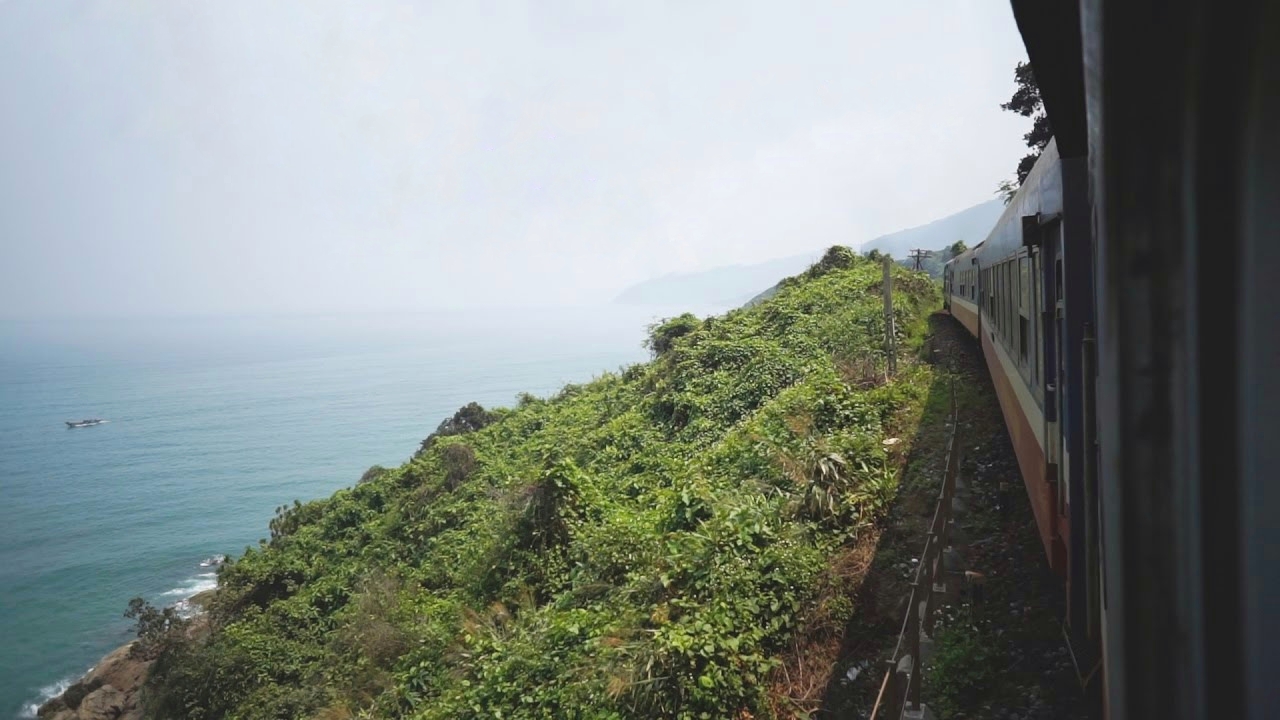
Spectacular view of Lang Co Beach from Hai Van Pass - one of the most beautiful train ride in Vietnam
Transferring between Da Nang and Hoian is really easy, just about 30km through the highway to the South, and tourists will be lost into a city with rich architecture mixture of Chinese, Japanese, Vietnamese and European influences. Hoian is famous for its Ancient Town full of shining lanterns, narrow streets with old style houses. Most tourists can relax and enjoy milk coffee while waiting for their tailor-made clothes to be done.
This is just a brief introduction to Hoian, discover more about Hoian in our Hoian Travel Guide.
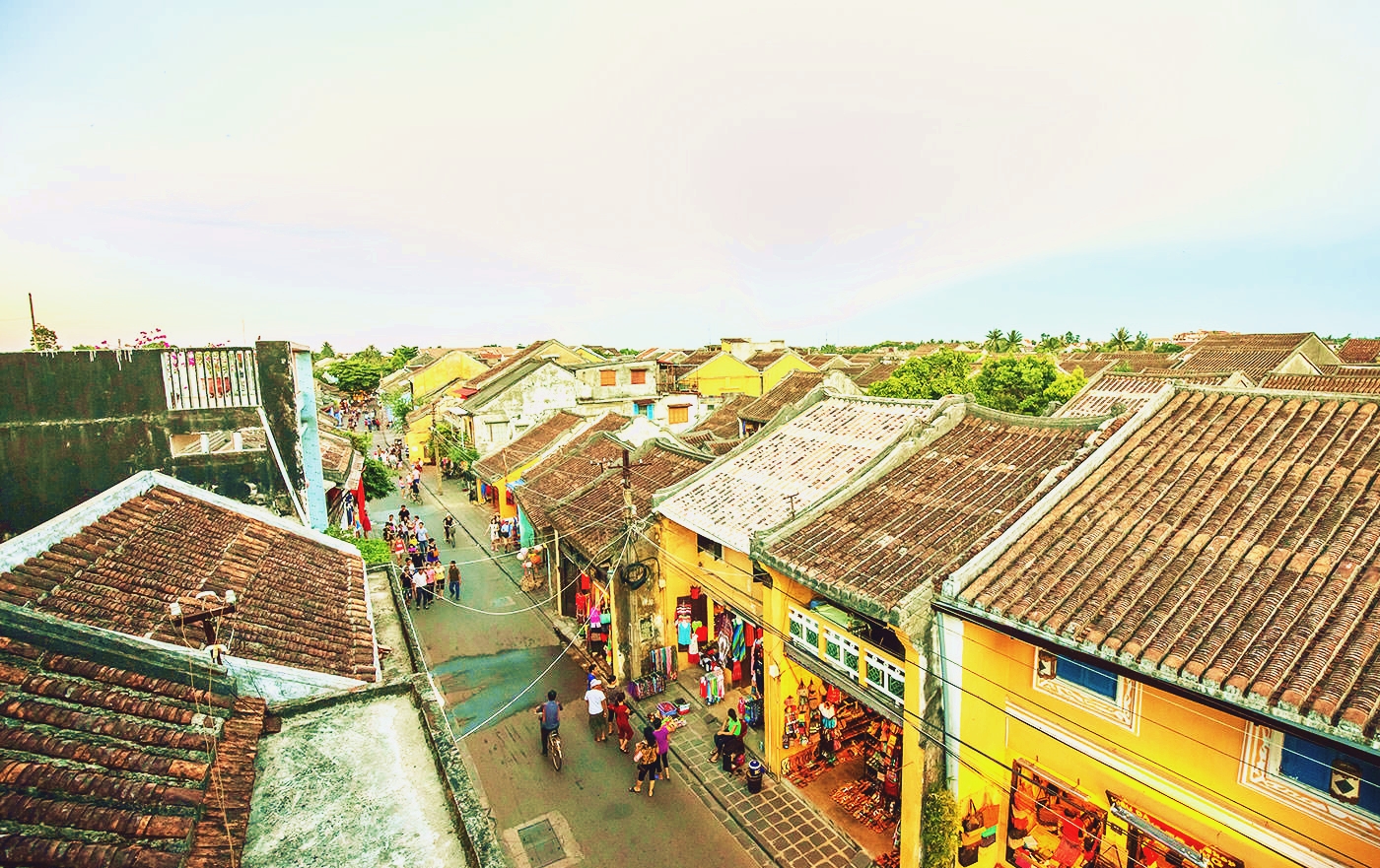
Slow down in Hoian Ancient Town, take a sip of coffee and enjoy your life
Further South, tourists reach Nha Trang city, famous for its beach resorts and lively nightlife. From here tourists can take a boat trip or cable car trip to visit islands. Nha Trang is the center of Vietnam for diving and watersports, but remember that during the rainy season, tourists can barely enjoy the sunshine and the beach is likely less attractive.
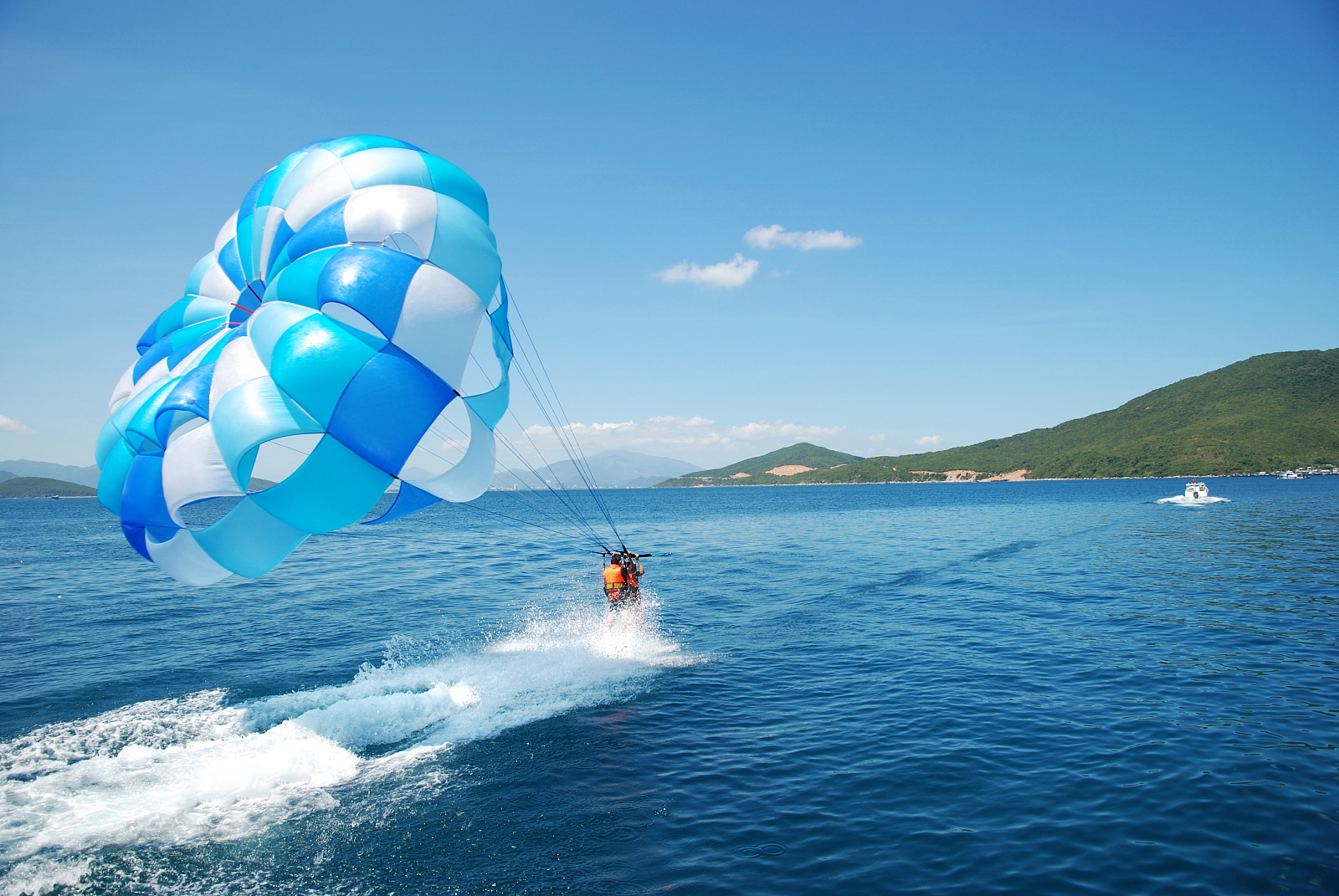
Prepare yourself to enjoy numberous of water sports...
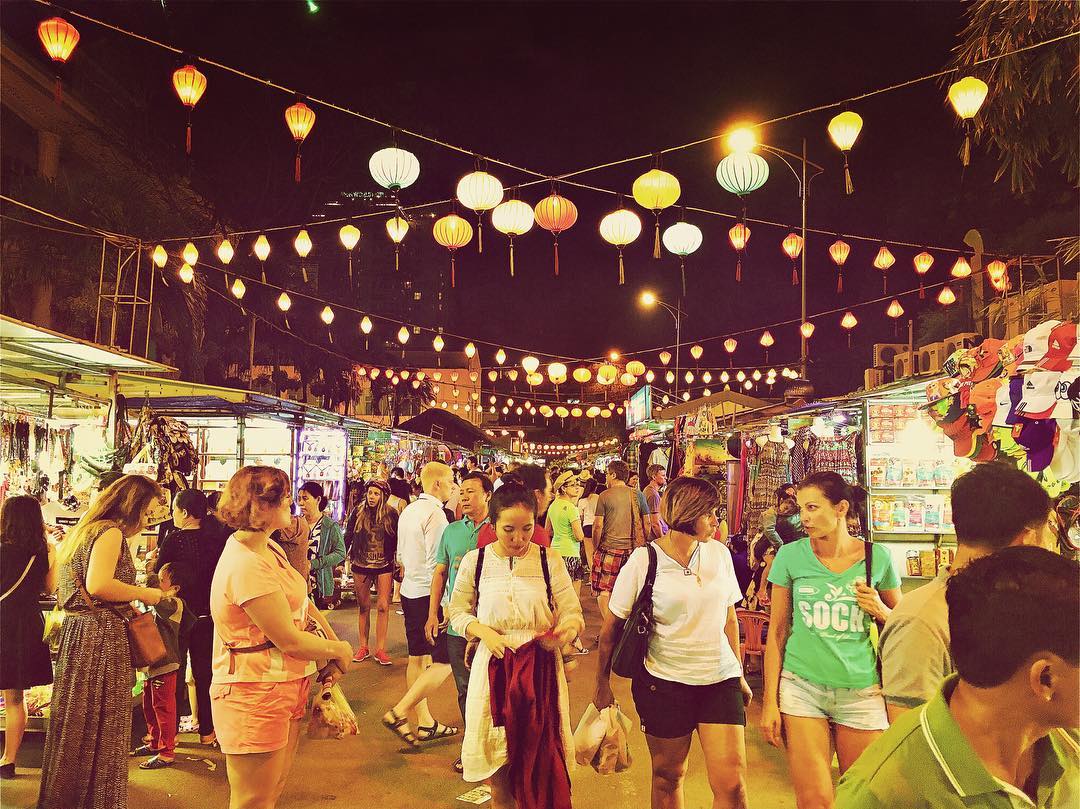
...and immerse yourself in the bustling night life.
Southwest of Nha Trang city, through Highway 1, tourists can go straight ahead to Ho Chi Minh city – the center of commerce of Vietnam. Back then in the beginning of 20th Century, Sai Gon (the former name of Ho Chi Minh city) was the Pearl of the Far East (la perle de l'Extrême-Orient), the capital of French Indochina. Nowadays, Ho Chi Minh city has been rapidly developing, known for its diversity culture and characters. Lots of tourists quickly fall in love with its extraordinary charm. With a day trip, tourists can spend the whole time for a city tour, or they can travel to Tay Ninh to discover Cao Dai religion, and stop by Cu Chi Tunnels to explore the hundreds kilometers tunnels and find out how Vietnamese people used is to stay out of reach of bombing.
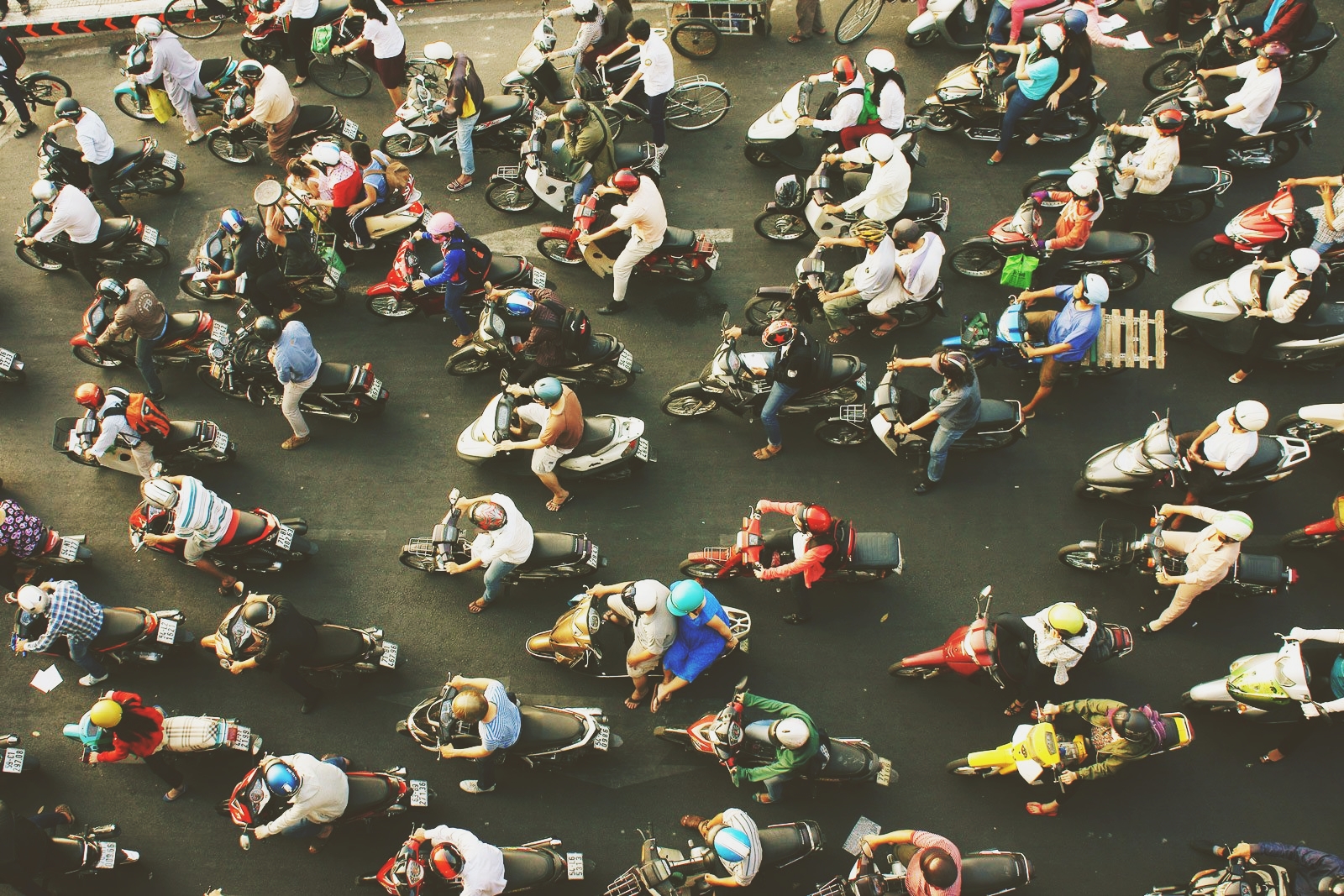
Joining a full day city tour around the lively Sai Gon, we know it's crowded...
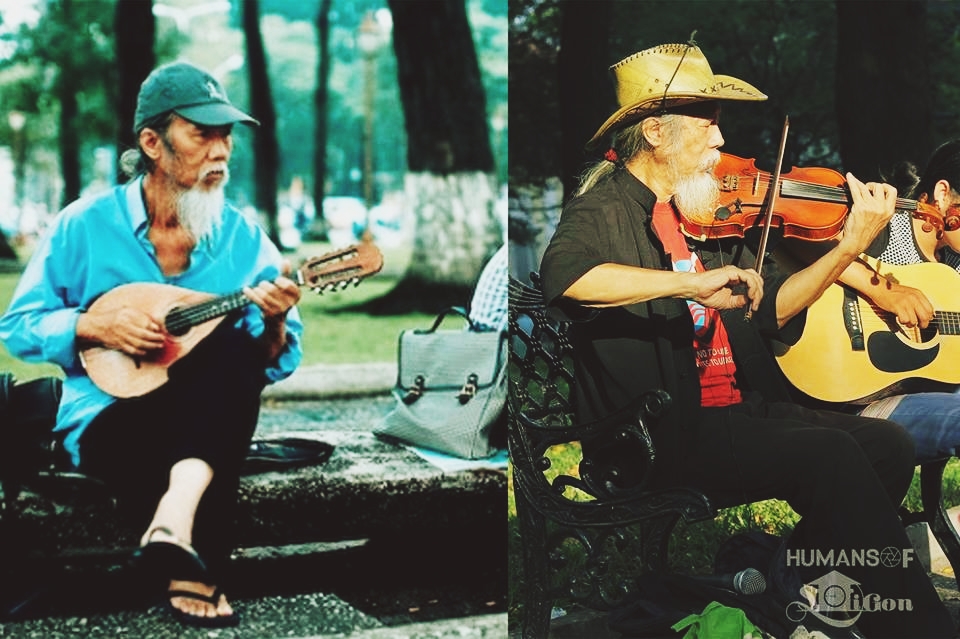
...but the people are great...
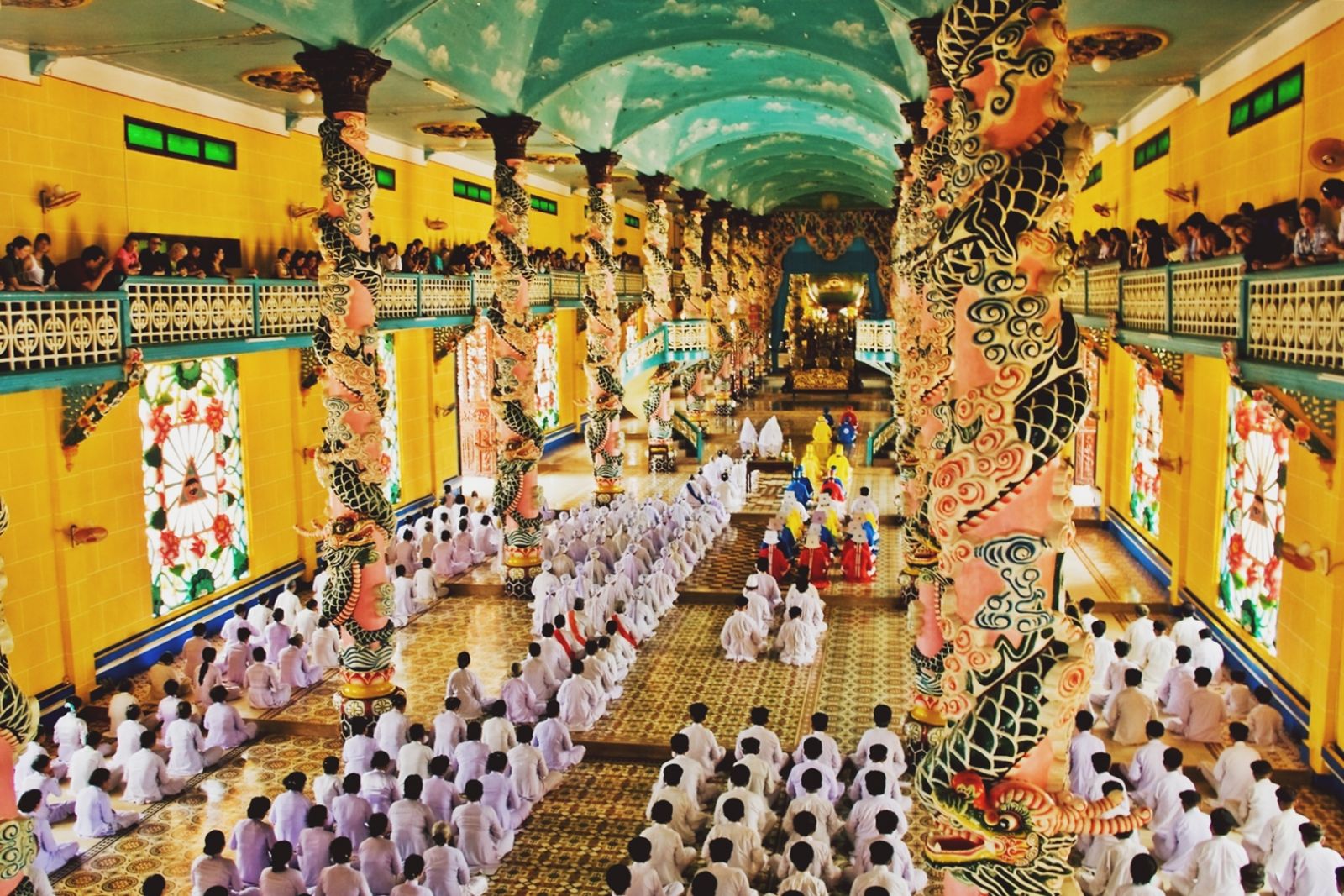
...or travel to the countryside to visit Cao Dai Temple and explore Caodaism, only in Vietnam.
From Ho Chi Minh city, tourists can easily travel to the Mekong Delta. The region where Mekong river (which runs from China, through Myanmar, Laos, Thailand, Cambodia, and Vietnam) approaches and empties into the sea through a network of distributaries.
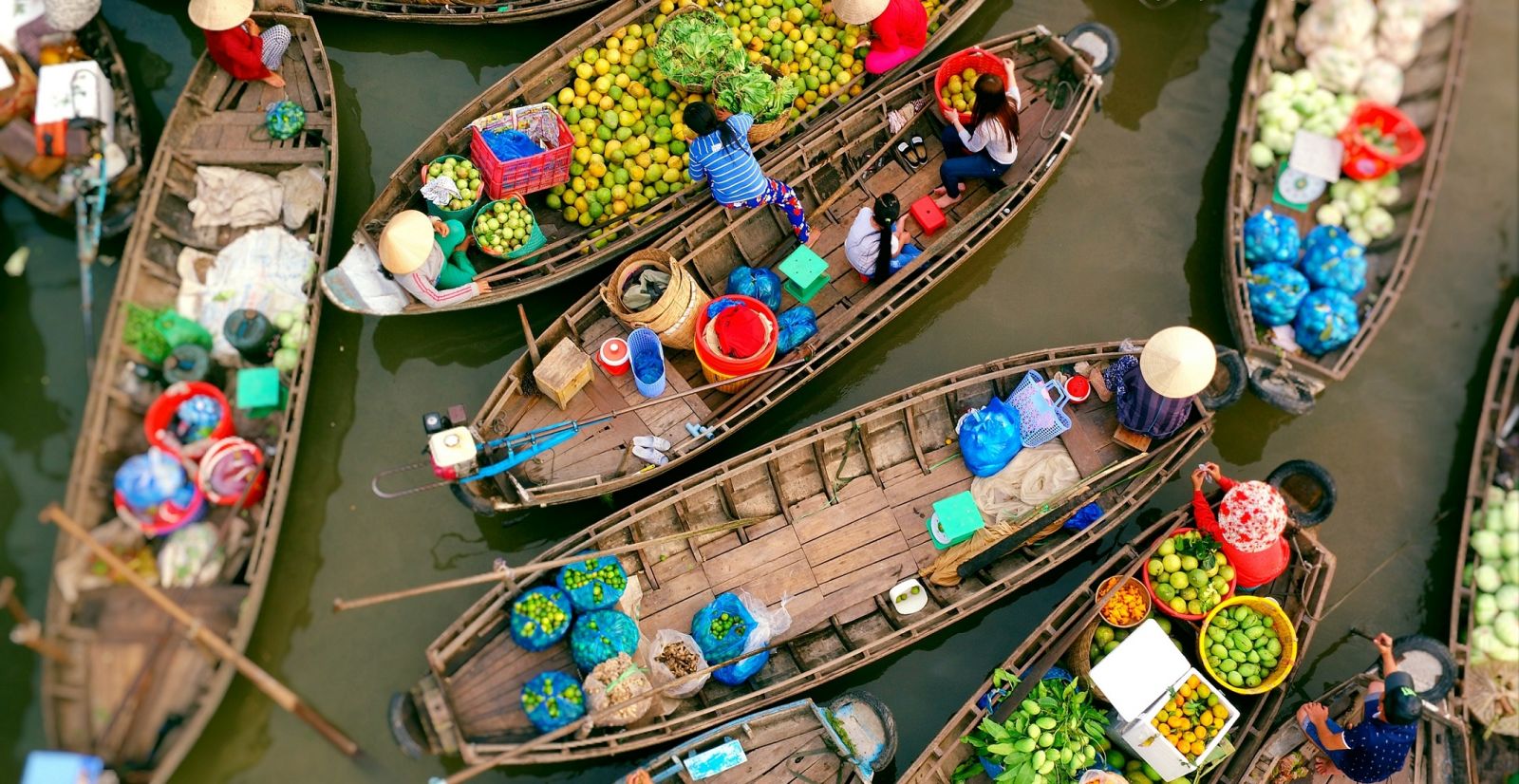
Tourists can spend their day on a floating market at Cai Be or Can Tho...
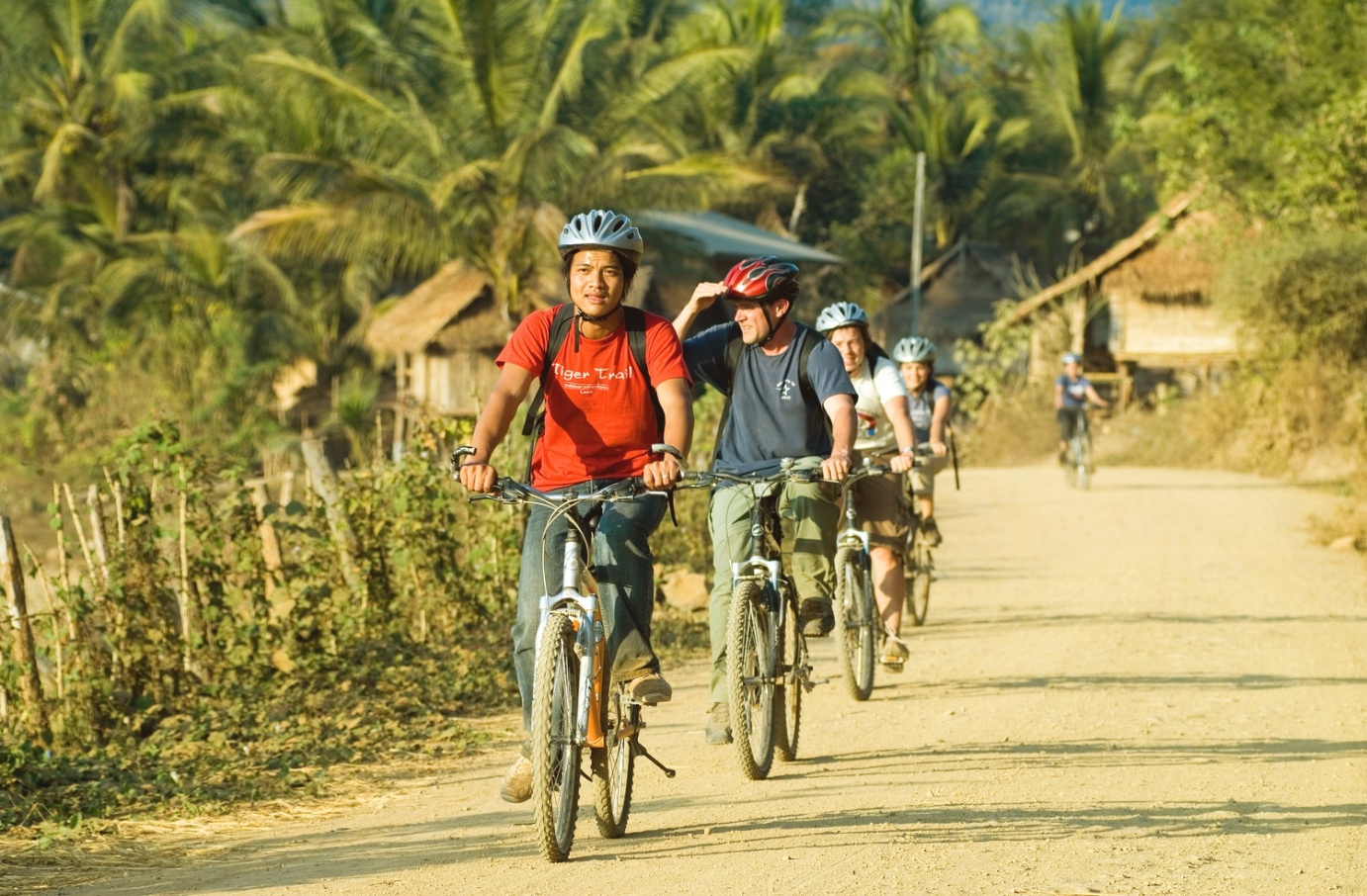
...and cycling to the fruits gardens to enjoy the seasonal tropical fruits.
To the Northeast of Ho Chi Minh city, towards the highlands, tourists find themselves lost into a different world than the bustle and hustle of Ho Chi Minh City. Here, Da Lat is the gateway to access the central highlands easily. If you need to get off the beaten track in Vietnam, then this is your place. There’s a lot to see: the extraordinary waterfalls, foggy cities, and furious elephant rides. Above all, this is the natural resources of coffee, tea and rubber.
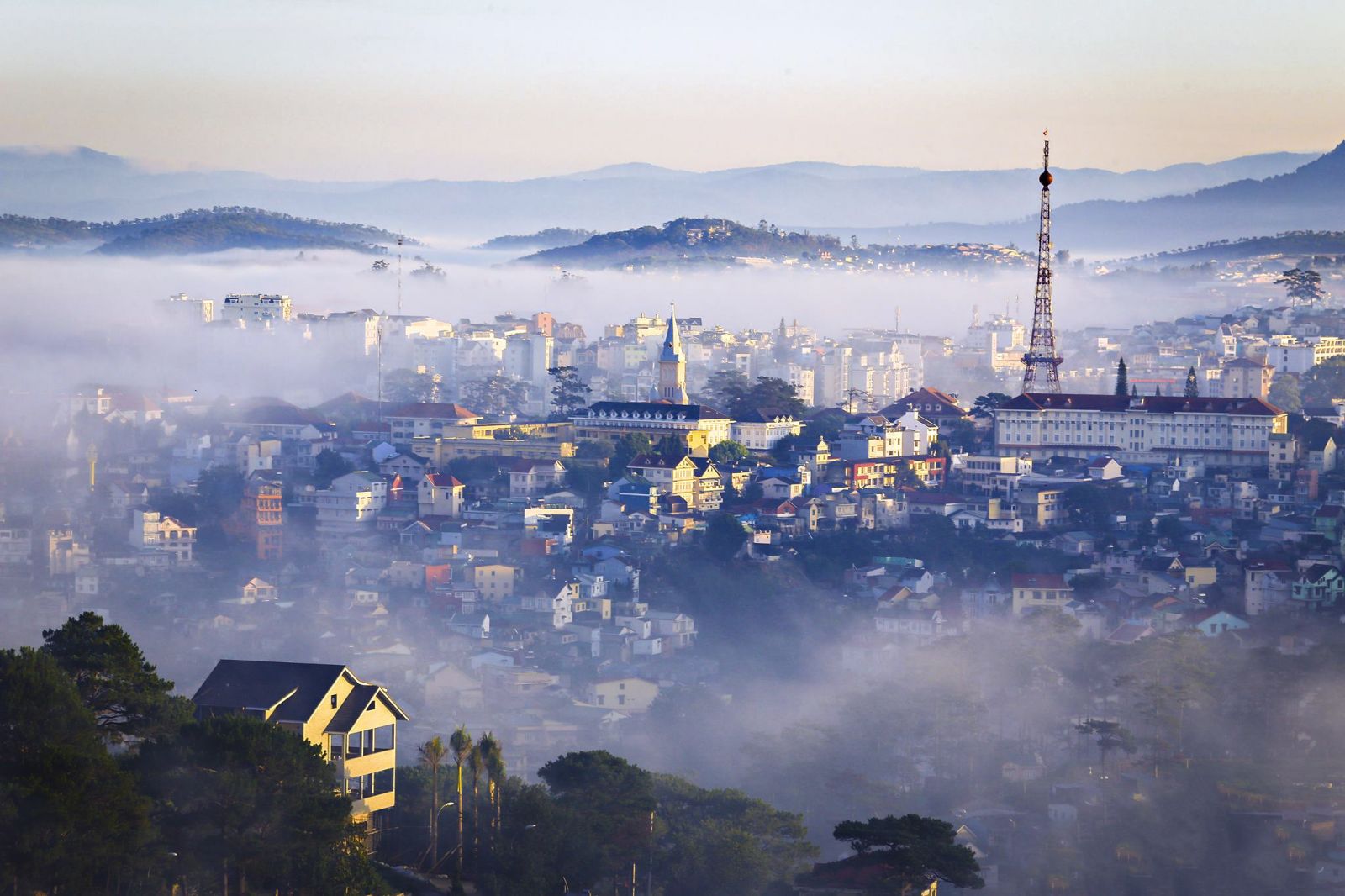
A magnificent cloudy morning in Da Lat
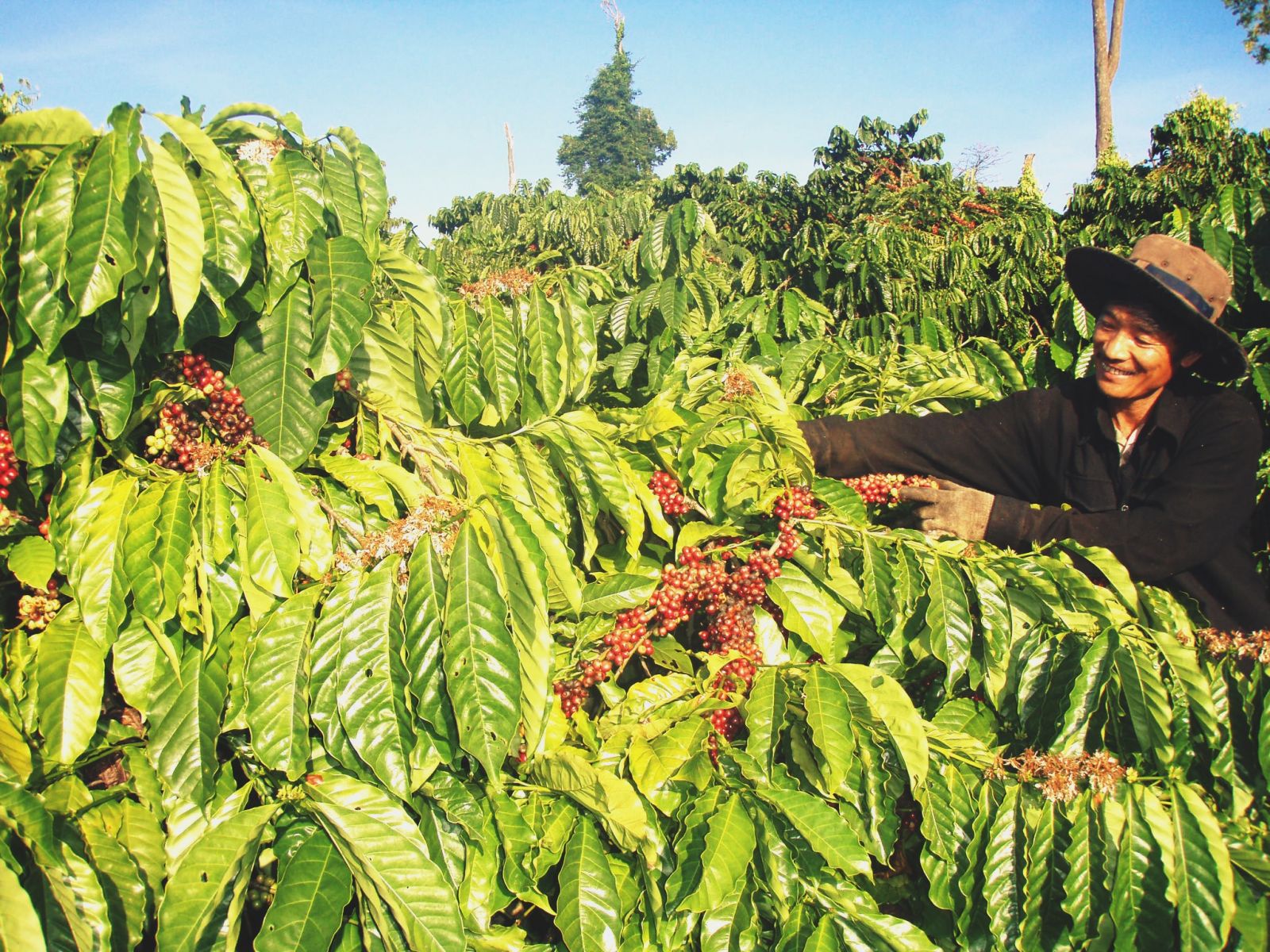
Harvesting coffee beans in Buon Me Thuot
When to visit Vietnam
Vietnam has a tropical monsoon climate in most of the regions, but because of differences in latitude and the variety in topographical relief, the weather is different between different areas of the country.
Northern Vietnam has humid subtropical climate, which leads to the (nearly) four seasons in a year. Spring often begins in March, when the temperature begins to rise. During the summer in the Northern Vietnam (Hanoi and around), the temperature could reach up to 40oC.
Along Central Coast is the monsoon climate, which means from September to February is the rainy season. And the more further to the south, the duration of rainy season is more likely to be shorter. During the rainy season, the temperature is often lower, but not as low as the temperature in the Northern Vietnam.
In Southern Vietnam where has the tropical savanna climate, the dry season lasts from December to April, and the rest is rainy season. But the temperatures rarely drop below 20oC, and sometimes reach 40oC during the hottest months (March, April and May).
Due to the differences between these regions, it’s hard to say when is the best time to visit Vietnam. Overall, from September to December, and from March to April are probably the best time if tourists are planning to travel around the whole country.
Food and drinks in Vietnam
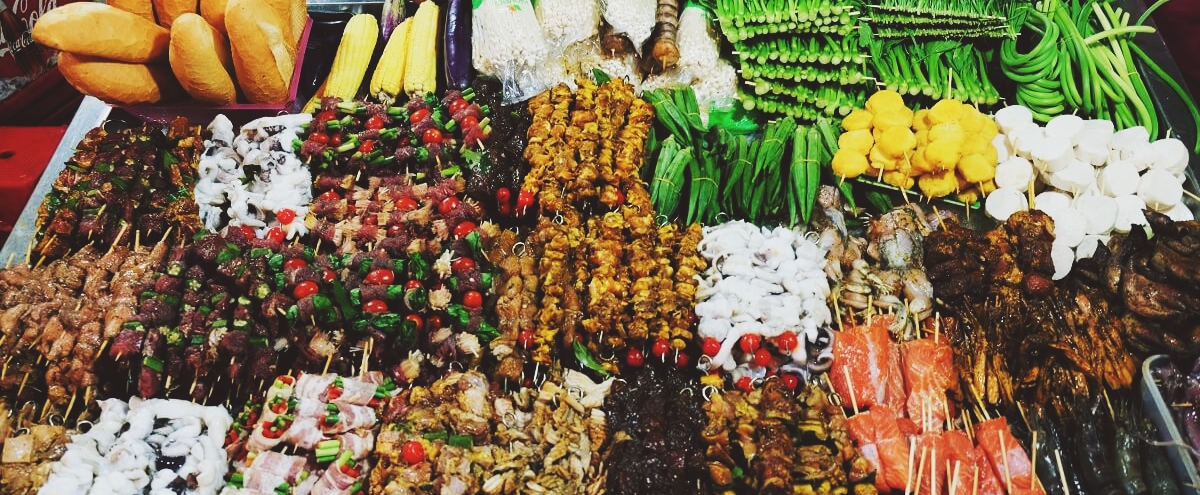
Due to the history with China, Vietnamese cuisine is influenced by the Chinese cuisine. But Vietnamese also add their own styles and flavor to the foods and make it different. Then during the 19th Century, French brings baguettes and other foods to French Indochina countries, this makes Vietnam has several dishes and beverages like baguettes and coffee. Vietnamese cuisine is also influenced by Champa, its neighbors Cambodia and Thailand, as well as Malaysian and Indian traders. To perfect the journey to Vietnam, tourists should taste its amazing food, as someone said: "You have to taste a culture to understand it".
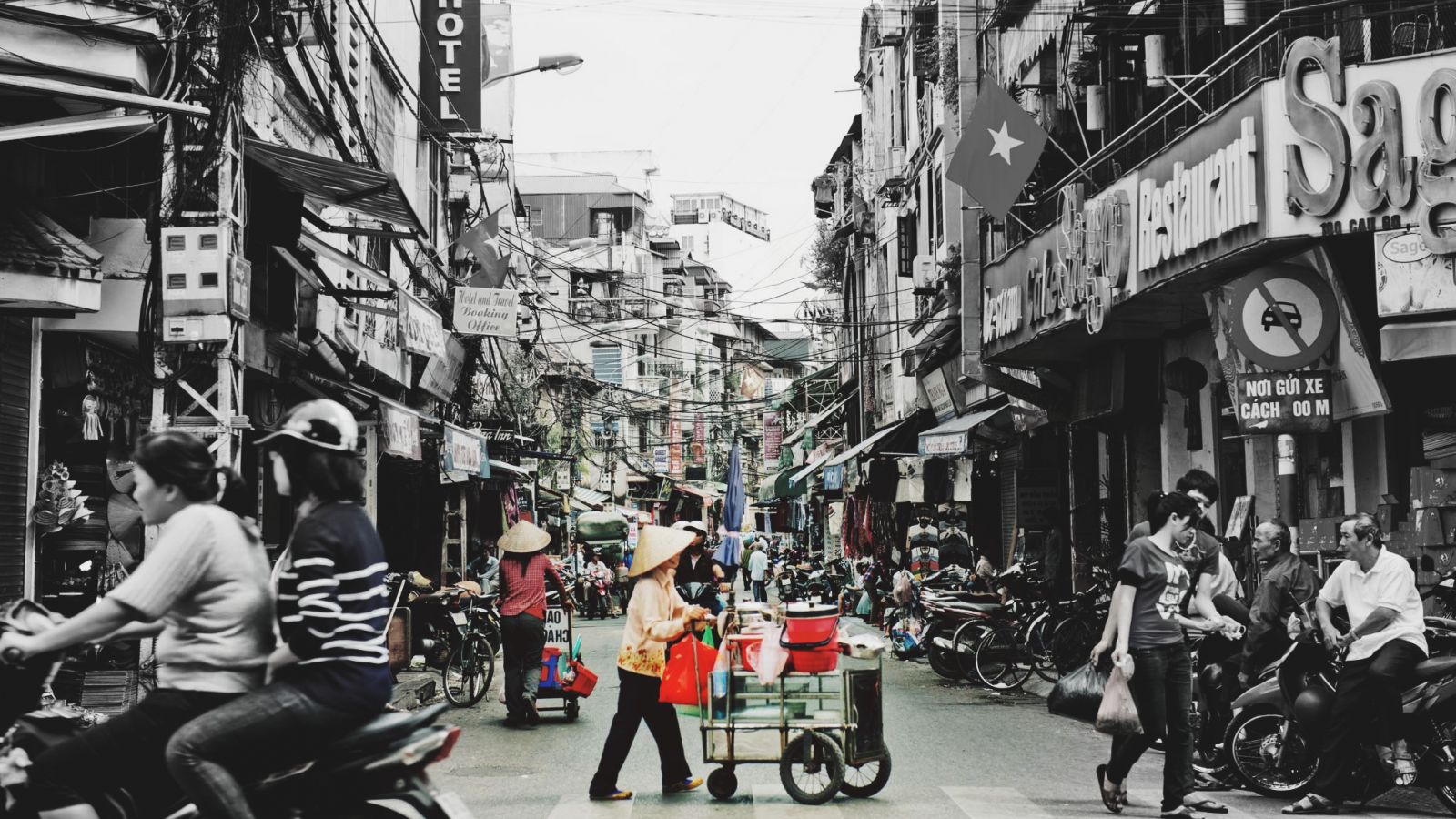
"You have to taste a culture to understand it"
The best way to try Vietnamese traditional cuisine is to try street foods. There are also Western-style restaurants for a formal experience. Eating Vietnamese food means foreigners have to know the way to use chopstick.
Vietnamese national drink is green tea, but a lot of tourists enjoy milk coffee, which is called Ca Phe Sua Da in Vietnamese. Local beer is also excellent, and each region has its own brand of beer.
Festivals and Events in Vietnam
Public holidays in Vietnam
January 1st New Year’s Day
Late January/mid-February (from December 30th – January 03rd of the Lunar Calendar): Vietnamese Tet – Lunar New Year (some places offices can close down for a week)
April 30th Liberation of Saigon 1975
May 1st International Labor Day
September 2nd National Independence Day
Major festivals in Vietnam
Tet The most important festival in Vietnam, it’s also the largest occasion when offices and stores are close down for around 7 days.
Perfume Pagoda Chua Huong, located to the west of Ha Noi, is a famous pilgrimage site of Northern Vietnam. Thousands of Buddhist Pilgrims go to this pagoda, from January 6th ‘til the end of March (in lunar calendar).
Phat Dan (Buddha’s Birthday) This festival is celebrated throughout the country. Taking place on April 8th (lunar calendar), during this festival, most of the pagodas and temples are decorated with colorful fruits, flowers, lanterns. Also, the carnival through streets attracts lots of visitors and local people.
Trung Thu (Mid-Autumn Festival) This is when the lion dances take place and children are playing with lantern, mooncakes (banh trung thu) are eaten. This festival takes place from 12th to 15th August each year (Lunar Calendar).
Christmas This is one of the four most important festivals of the Vietnamese, including the birthday of Buddha, the New Year and the Mid-Autumn Festival.
The biggest festival – Tet – or well known as the Lunar New Year, is a festival that tourists might want to take note of, when most of the store is closed down and local transports is stretched to its limit. It is the same for the other holidays.
Furthermore, most of the festivals in Vietnam take place according to the lunar calendar, which is also linked to China, Taiwan, Korean or Japan.
So, with a lot of festival and events during the year, it’s the best to check locally before the trip.
For your information
Entrance requirements
All foreign nationals need a visa to enter Vietnam, except:
- Brunei if its citizens travelling to Vietnam for no more than 14 days;
- Philippines if its citizens travelling to Vietnam for no more than 21 days;
- Thailand, Malaysia, Singapore, Indonesia, Cambodia and Laos if their citizens travelling to Vietnam for no more than 30 days;
- Japan, South Korean, Sweden, Norway, Denmark, Russia and Finland if their citizens travelling to Vietnam for no more than 15 days;
- Germany, France, UK, Italy and Spain if their citizens travelling to Vietnam for no more than 15 days (from July 1st 2017 to June 30th 2018)
- And other policies for Official Passport holders, Diplomatic Passport holders etc.
Money
Vietnam’s unit of currency is Vietnam Dong (đ/d/VND). Credit cards such as Visa and MasterCard are accepted at most western-style restaurant and most mid-level and up hotels.
Opening hours
Usually, the opening hours of business are 7:30 – 11:30am and 1:30 – 4:30pm. Most offices are close at Weekends, but shops and markets, supermarkets open every day.
Dialing codes
To call from abroad to Vietnam, dial your international access code, then 84 + number minus the first 0.
To call from Vietnam to abroad, dial 00 + country code + area code minus the first 0 + number.
Those are some of the essentials information of Vietnam that Hotelshoian.com wants its guest to take notice of. Despite of the barriers of traveling to and in Vietnam, this is still a fascinating destination appealing tourists by its timeless charm.

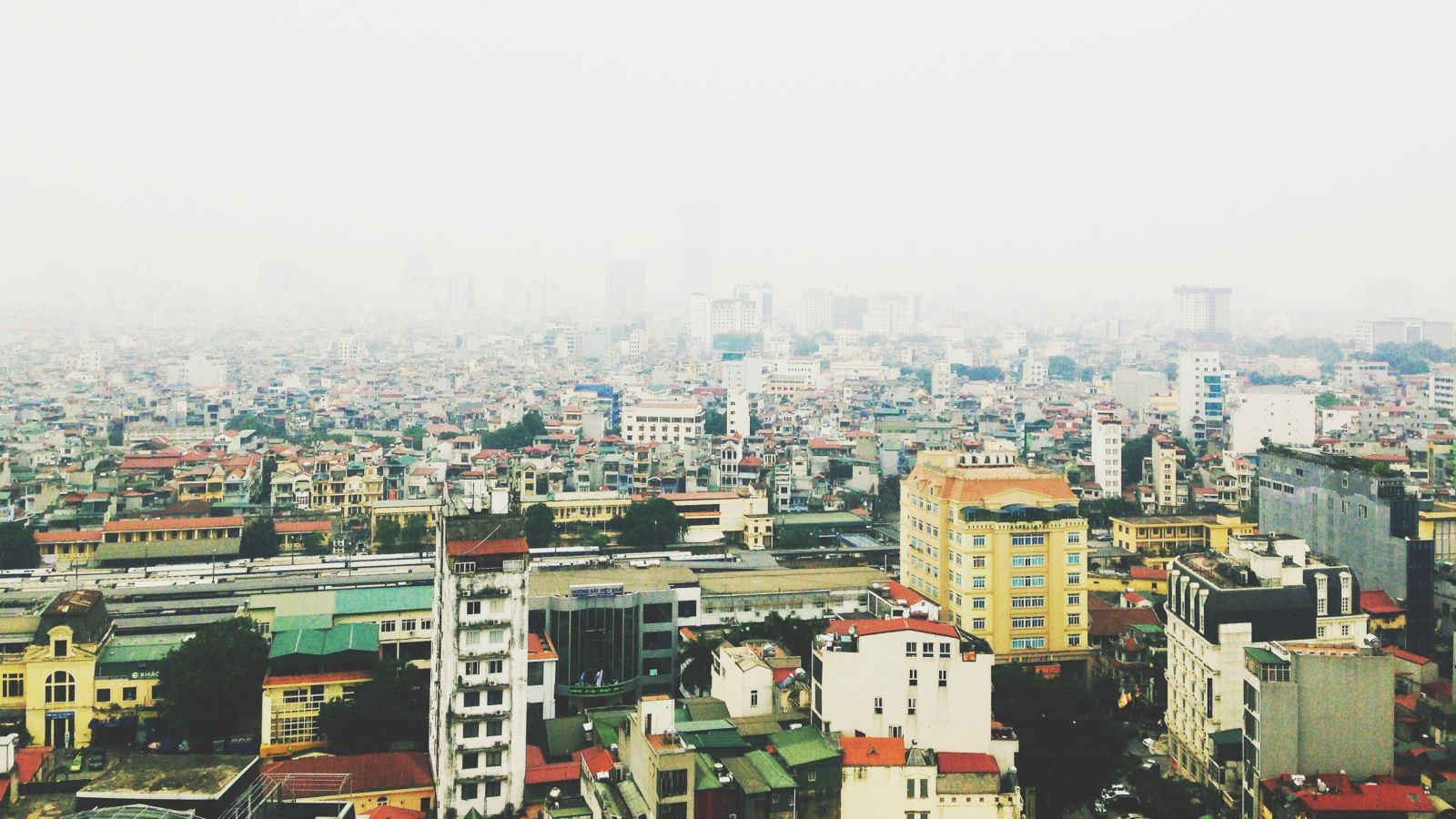
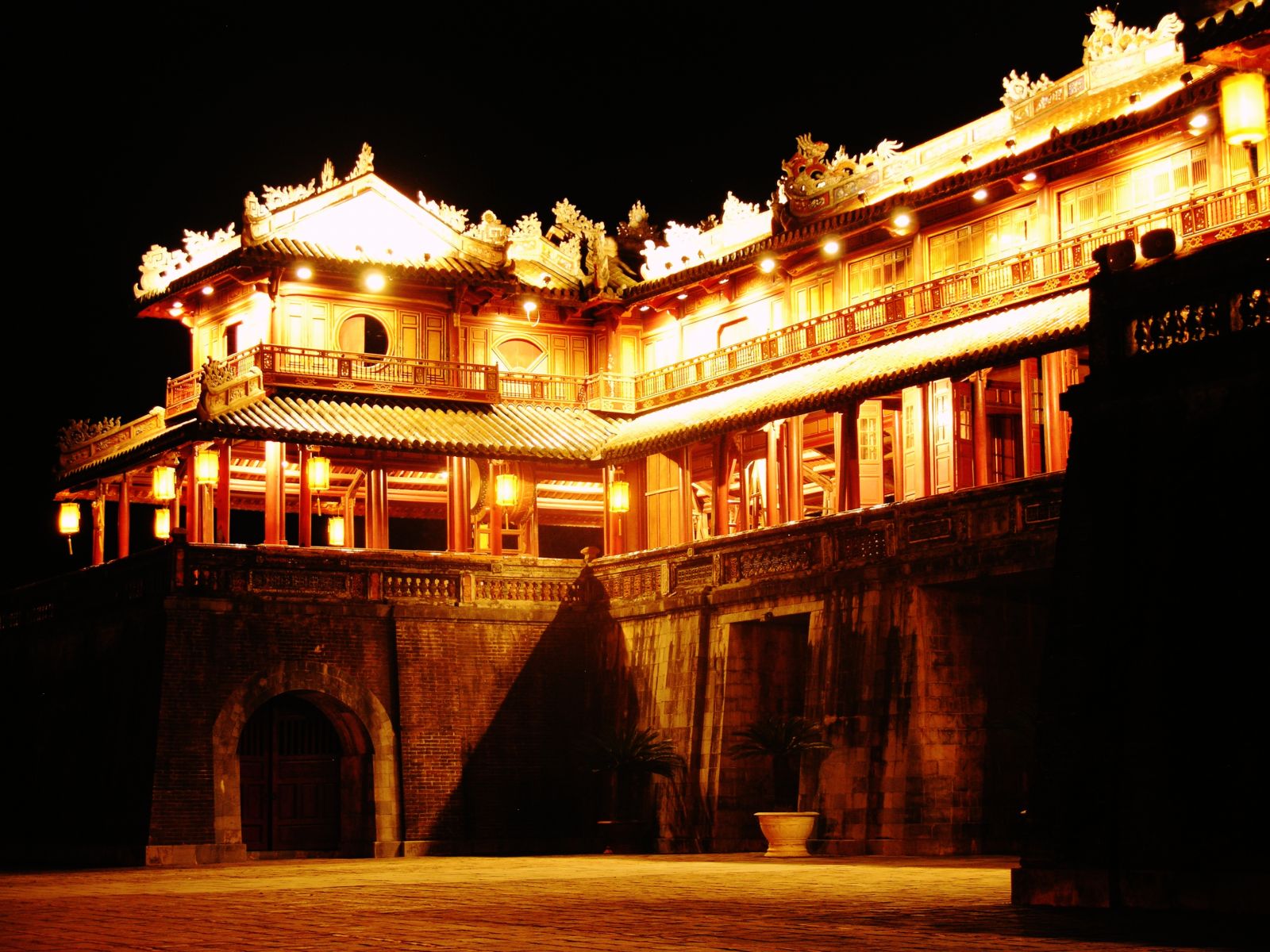
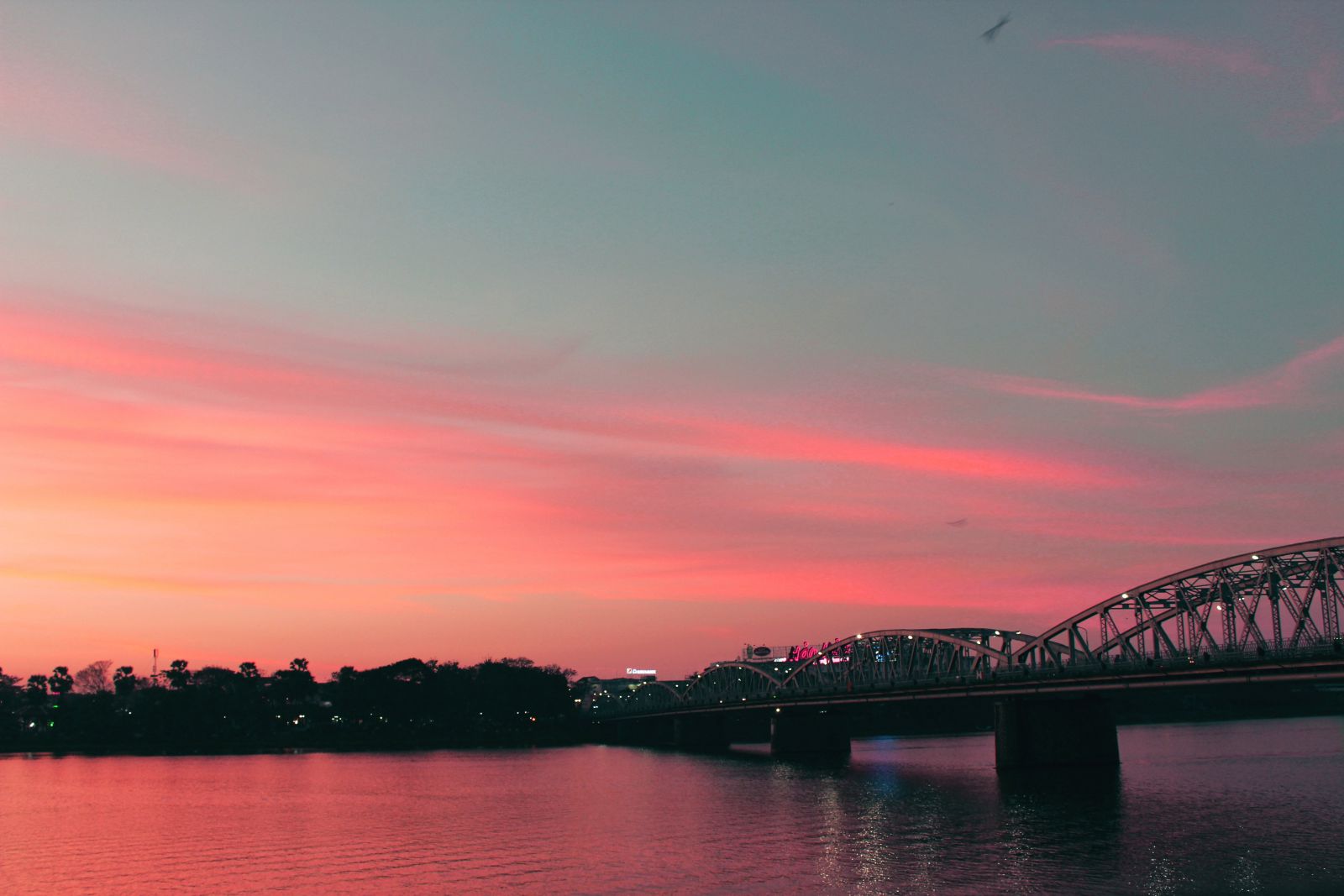
.jpg)
(1).jpg)
